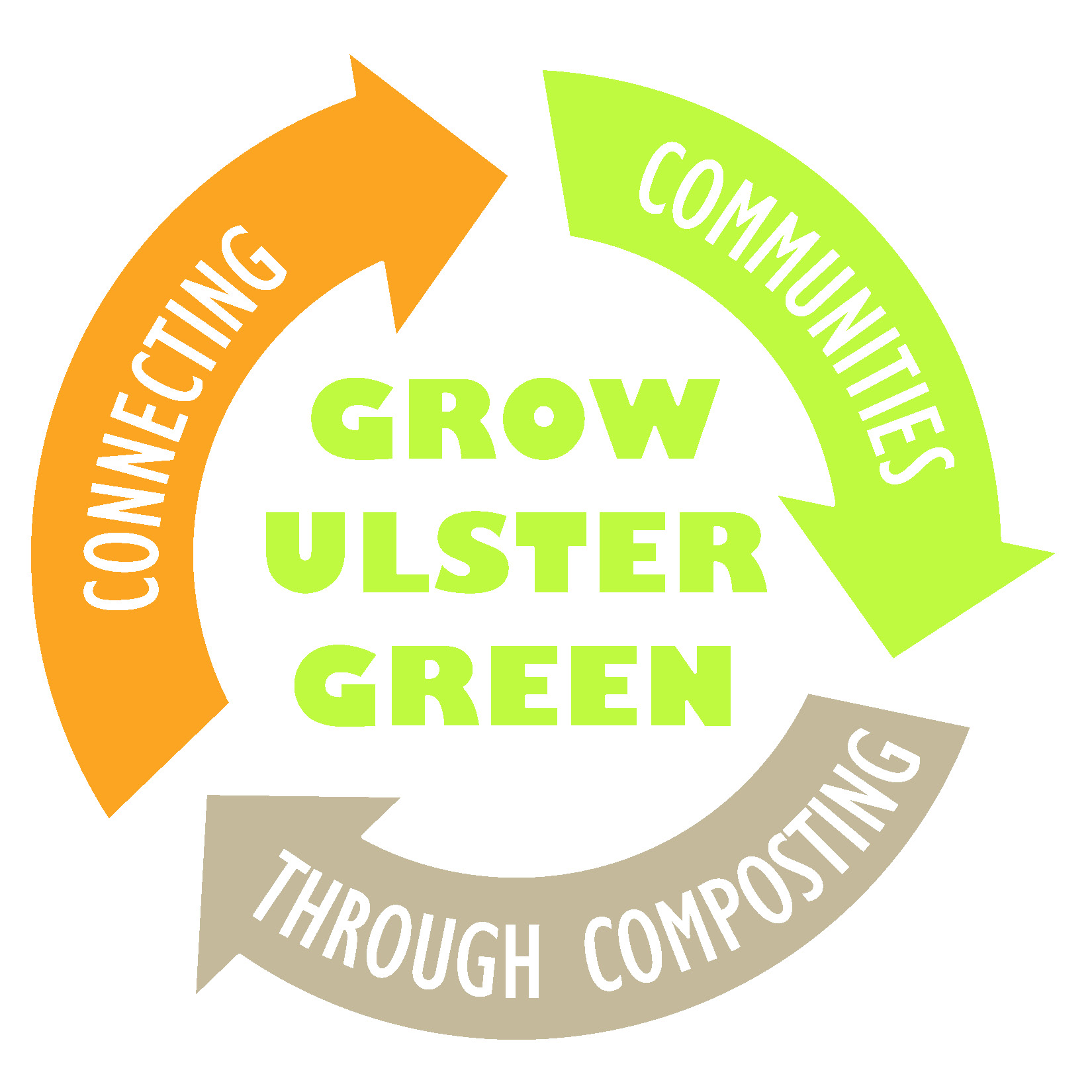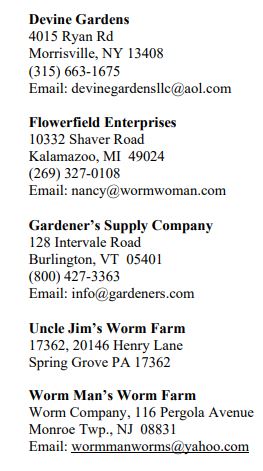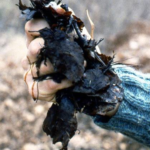
WHY COMPOST?
Help Us Grow Ulster Green!
Did you know that food scraps make up the largest component of material that gets buried in our landfills? When food and other biodegradable materials become buried in a landfill, they break down anaerobically and create Methane, a greenhouse gas more potent than carbon dioxide. By reducing food waste and composting our food scraps, families can help reduce the amount of solid waste that requires disposal, which greatly reduces environmental pollution from these wastes that can easily be recycled right in your own backyard!
How to get started?
| Commercial Composting Options
(for businesses, schools, facilities, etc.) |
Residential Composting Options
(for homeowners, renters, etc.) |
|---|---|
| Manage food scraps with on-site composting | Backyard Composting |
| Hire a Hauling Service | Hire a Hauling Service |
| Self-Haul to a Composting Site | Self-Haul to a Community Drop-Off Site |
| Start a community garden/communal composting program |
View our “Home Composting Guide” (ENGLISH)
View our “Home Composting Guide” (SPANISH)
View our “Home Guide to Reducing Food Waste”
View our “Vermicomposting Fact Sheet”
View “Is it Done Yet?”
Learn more about Using Finished Compost
Learn more about Reducing Food Waste
Learn more about How to Use a Tumbler
Learn more about Lasagna Composting
Learn more about Preventing Animal Nuisances
Learn more about Rainwater Harvesting Factsheet
Frequently Asked Questions
In general, the composting process goes through several distinct heat phases. When a compost pile is built well, it can reach high temperatures around 100 F in as little as a few days. This is called the mesophilic stage where the pile heats up rapidly and there is an explosive growth of bacterial life that is beneficial to the composting process. Ideally, the temperature should peak and stabilize (120-140 F) for a period of time, usually 1-2 weeks. This is called the thermophilic phase or active composting phase. These high temps destroy pathogens, weed seeds, and fly larvae. After a couple of weeks, the temperature will start to drop off below 100F (back to a mesophilic range) leaving behind more resistant woody biomass and resistant wood-compounds which are worked on by fungi and other soil microbes that like cooler temperatures. Turning/mixing the pile during this point will add air and can help bring the temperature back up to the thermophilic range to reinvigorate the process. After about a month or two, temperatures fall to a low that is not likely to peak again, and the compost pile may transition into the curing and maturation phases.
So, is your pile cooking?
Heat is a great process indicator for how well the pile is decomposing. Residents can purchase a special composting thermometer by searching the web for products like ReoTemp. While this is interesting, it’s not absolutely necessary to be successful at hot composting. Heat production depends on the size of the pile (the ideal pile size is 3 feet x 3 feet x 3 feet), its moisture content (see FAQ about the Squeeze Test), and the materials being composted (hint: small pieces break down faster). By following basic management tips like these, you can ensure your compost pile reaches high temps.
Many people compost in their backyard without any pest problems whatsoever, but we recognize that attracting animals can be a concern. Check out these helpful Fact Sheets linked below, and we will briefly summarize some of the best tips we’ve found.
- Avoid meat, bones, dairy products and excessive amounts of cooked foods
- Always cover food scraps with plenty of browns. Remember the composting recipe 3 browns :1 greens
- Contain the pile, such as by covering it with a tarp held down by bricks or cinder blocks
- Add chicken wire around the pile to deter burrowing animals
- Get a compost bin with a locking lid
- Do not locate your pile near bird feeders or other things that attract animals
Compost Education Center Factsheet-18-Vermin-Resistance
Cornell Waste Mgmt. Institute – Fact Sheet – Avoiding Nuisances
Composting worms may be purchased online and ship directly to your door! Refer to the list below for more information. In general, 1 lb. worms = 1,000 worms. 1 lb. per 2 adults in your household is enough to get started. Remember, worms will reproduce quickly! Make sure you are ordered RED WIGGLERS – eisinia fetida
UCRRA’s Recycling Outreach Team offers a Spring Compost Bin and Rain Barrel Sale that features many different options for home compost bins and accessories, including vermicomposting bins. Residents can pre-order their items through the online store, which is generally open March through the end of April every year. Check the Events & Classes tab in Spring.
Otherwise, residents can usually find compost bins for sale at home improvement centers (Lowes, Home Depot, etc.) and garden centers (Walmart, Target, Adams, etc). Residents can shop online and order direct from suppliers or through online retailers.

Moisture is an important component of the composting recipe! For fast, hot composting, ensure that your compost pile is significantly damp, but not too wet. A good rule of thumb is to aim for 45-55% moisture using ‘the Squeeze Test’. Squeeze a handful of compost (wear a glove if you prefer) and you can determine the moisture content by observing what type of ball/mass forms in your hand and how much water drips out. If a firm squeeze of the material causes water to gush out of your fist, it is way too wet. If a firm squeeze of the material causes only one or two drops of water to form, then it’s the perfect moisture level (think of a wrung-out sponge). If a firm squeeze of the material doesn’t form a ball in your hand, the material may be too dry.

UCRRA’s Recycling Outreach Team offers a Spring Compost Bin and Rain Barrel Sale that features many different options for home compost bins and accessories, including tumblers, enclosed bins, vermicomposting bins, leaf storage, turning/mixing tools, and more. Residents can pre-order their items through the online store, which is generally open March through the end of April every year. Check the Events & Classes tab in Spring.
Otherwise, residents can usually find compost bins for sale at home improvement centers (Lowes, Home Depot, etc.) and garden centers (Walmart, Target, Adams, etc). Residents can shop online and order direct from suppliers or through online retailers.
What can and cannot be composted may vary depending on whether or not you’re doing home composting or utilizing a local food scrap drop off program. The following guidelines are recommended for home composting. Always check with your drop off site if someone else does the composting for you!
Not all organic wastes will break down completely or safely in a backyard composting system. Home composters (and especially beginner composters) should avoid certain items that may be more problematic.
Garden Wastes: Diseased plants, chemically-treated plants or grass clippings, weeds with weed seeds, etc. should be avoided in backyard composting.
Kitchen Wastes: Butter, fats, cooking oils, meats (cooked or raw), bones, fish scraps, milk or dairy products, salad dressing, cooked foods with excessive oils/sauces, seeds, dishwater, etc. should be avoided in backyard composting.
Animal Manures: Cat, dog, bird manures or cat litter bedding should be avoided in backyard composting.
Other: Ashes/coal, treated/painted wood, colored mulch products, waxed cardboard, glossy paper, paper towels with cleaning chemicals, compostable packaging should be avoided in backyard composting.
Not all organic wastes will break down completely or safely in a backyard composting system. Home composters (especially beginner composters) should avoid certain items that may be more difficult to manage. Backyard compost piles are typically not hot enough to reach the temperatures that reduce pests and pathogens. Industrial scale compost operations can more easily achieve thermophilic composting in the range of 131-165 degrees F, which can destroy weeds, seeds, etc. and break down residuals like meat, bones, dairy products, etc. as well as more easily manage compostable paper products.
Composting has many benefits! Food waste makes up 24% of the material buried in landfills. When food and other natural materials are landfilled, they break down anaerobically and off-gas methane, a potent greenhouse gas that is warming the climate. Participating in composting not only reduces the waste stream, which saves landfill space for items that can’t be recycled, but it can also reduce waste disposal costs for large waste generators like schools, hospitals, and food service establishments. The finished compost that results from the composting process also has many horticultural uses and applications to better our agricultural soils and steward soil health. Composting is one of the most effective ways to be climate smart, and its recycling’s next frontier!
New York State and Ulster County passed mandatory organics recycling laws the regulate large food scrap generators only. Residents are certainly encouraged, but not required, to compost under these laws. Learn more about these laws here.
Transporting residential and institutional waste (including food scraps) is exempt from NYSDEC transporter regulations (364-2.1(b)(1)). In addition, regulated waste (commercial or industrial waste) is exempt in quantities less than or equal to 2,000 pounds in a single shipment (364-2.1(b)(5)).If a transporter is hauling over one ton of commercial waste (which includes food scraps from a restaurant or grocery store), the transporter must register the vehicle with NYSDEC (364-3.1(c)). For more information visit www.dec.ny.gov/chemical/8483.html
Master Composters know that the secret to fast, hot composting is a balanced recipe of browns and greens. Different plant materials will impart different physical or chemical qualities to the composting process, which is why we often refer to the plants we compost as browns or greens.
Browns are dry, woody plant materials – think dry leaves, twigs, pine cones, etc. Browns become a source of carbon for soil microbes, and since most biological organisms need 25x more Carbon than Nitrogen, Brown materials should make up 3/4 of the materials in your compost pile.
Greens are more fresh, wet plant wastes – think fresh leaves, grass clippings, weeds, food scraps, etc. Greens become a source of nitrogen for soil microbes, and greens should really only make up about 1/4 of the pile by volume.
A good rule of thumb is to always mix 3 parts ‘browns’ to every 1 part ‘greens’. For practicality, think of this ratio on a volume basis, not by weight.
With sanitary management techniques and best practices, it’s easy to prevent nuisances like odors and pests. Food scraps should be stored in a sealed, leak-proof container and the container should be regularly emptied and rinsed clean. Consult with UCRRA for guidance on preventing odors and pests.
Yes! Because food waste makes up a large portion of the waste stream, composting can help reduce waste disposal costs. When combined with other waste reduction and recycling practices, these costs savings can be substantial. This is especially true for schools, restaurants, cafes, and other food service establishments where the majority of the waste stream is inedible food scraps.
UCRRA does not haul food scraps, but these services may be available in your area through a private company. UCRRA maintains a contact list for food waste management services.
